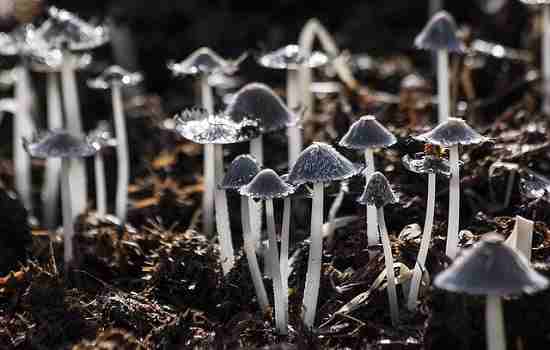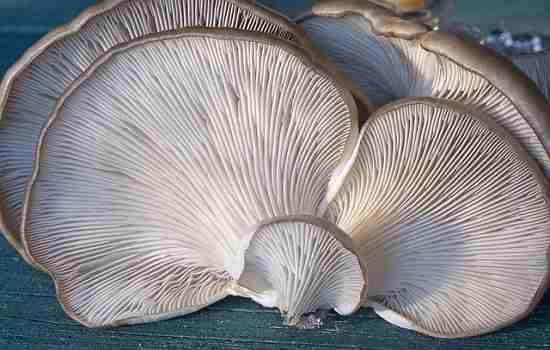Profitable Mushroom Farming in India; Income & Harvesting Techniques
Complete Guide to Profitable Mushroom Farming in India
Mushroom cultivation in India as an alternative source of income for many people is slowly increasing. Also, Mushroom farming is one of the most profitable farming business ideas that you can start with minimum investment and very little space. China, Italy, the US, and the Netherlands, Australia are the top producers of mushrooms worldwide. Uttar Pradesh is the leading mushroom region in Uttar Pradesh, Bihar after Tripura and Kerala.
We will discuss the whole method of cultivating rice straw mushroom cultivation, oyster mushroom cultivation, and button mushroom cultivation.how much mushroom can be grown in 1 acre?
Mushrooms are important not only for nutritional and medicinal purposes but also for export. It requires less space or land and is therefore of great importance to landless and marginal landholders. Mushroom production has huge potential as a yielding action. It grows independently of sunlight, feeds on organic matter, and does not require fertile soil. In addition to the floor, air space is also used resulting in higher productivity. Mushroom cultivation can provide additional income to the farmers who are willing to carry out this activity especially in their thin season.
mushroom cultivation is good business as future demand is increasing day by day and you can make a decent profit if you don’t have much area or land in mushroom cultivation.
Most of the people having questions which can find your answer here
- How to grow mushrooms
- How much does it cost to start a mushroom farm?
- How do I start a mushroom farm?
- How much can you earn from mushroom farming?
- How long does it take to grow a mushroom?
- How much land is required for mushroom farming?
- What conditions are needed for a mushroom to grow?
Before moving further we need to understand Different type of Mushrooms
Different Types of Mushrooms – How to grow mushrooms
• Button mushroom cultivation (while button mushrooms grow in the winter season)
• Rice straw mushrooms (Rice straw mushrooms can grow at a temperature of 35 to 40 degrees Celsius)
• oyster mushroom cultivation (Oyster mushrooms, on the other hand, grow in the northern plains)
These are the three major varieties used for cultivation in India All these mushrooms of commercial importance are grown with different methods and techniques. Mushrooms are grown in specific types of beds known as compost beds. Let’s discuss each of these methods
How to Grow Button Mushroom farming in India

Making compost base
The first step in drying mushrooms is composting which is done in the open. The compost yard for button mushroom farming is built on a clean, raised platform made of concrete. It should be erected so that excess water does not accumulate on the mound. Although composting is done in the open, it should be covered to protect it from rainwater. There are 2 types of compost prepared – natural and synthetic compost. The compost is made in trays of size 110 X 60 X 18 cm.
Artificial compost for mushroom farming
Ingredients of artificial compost include wheat straw, urea, bran, calcium ammonium nitrate/ammonium sulfate, and gypsum. The straw should be cut to 9 to 24 cm. In length. It is then spread evenly over the composting yard to form a thin layer. After that, sprinkle with water and soak thoroughly. In the next step, mix all the other elements like urea, gypsum, calcium nitrate, bran with wet straw and make the block into a heap.
Filling compost into trays
The finished compost is dark brown. When you fill the compost tray, it should not be too wet or dry. If the compost is dry, spray a few drops in water. If it is too moist, let a little water evaporate. The size of the tray for spreading compost will be as per your convenience. But, it should be 14 to 20 cm deep. Also, make sure the tray is made of softwood. The edge of the tray should be filled with compost and leveled on the surface.

Ordinary Natural compost
The essential ingredients are horse manure, poultry manure, wheat straw, and gypsum. Wheat straw should be finely chopped. Animals dung should not be mixed with other animals ‘dung. They should be collected fresh and not exposed to rain. Once the components are mixed they are spread evenly over the composting yard. Water is sprayed on the surface to wet the straw. For synthetic fertilizers, it is done by heaping. Due to fermentation, the temperature of the heap increases, and the smell is released due to the release of ammonia. This is the sign that the compost has opened. The pile is turned every three days and sprinkled with water.
Covering
Covered soil is made by mixing finely chopped and crushed, rotten cow dung in the garden soil. The pH should be on the alkaline side. Once formed, a protective covering soil will have to be prepared to destroy pests, nematodes, insects, and other fungi. Sterilization can be done after treatment with formalin solution or steam. After the coated soil is spread on the compost, the temperature is kept at 25 C for 72 hours, and then it is reduced to 18 C. Remember that the casing stage needs plenty of fresh air. Therefore the room must have adequate ventilation facilities during the casing stage.
Spawning
Spanning is basically the process of planting mushroom mycelium in beds. Sponsors can be obtained from certified national laboratories at nominal cost. Spawning can be done in two ways by scattering the compost on the surface of the bed in the tray or mixing in the compost before filling the tray otherwise. Cover the tray with old newspapers after spanning. The sheet is then sprinkled with a little water to retain moisture and humidity. There must be a headspace of at least 3 feet between the top tray and the ceiling.
Collecting Mushrooms
After 15 to 20 days of the casing, the pinheads begin to notice easily. Within 5 to 6 days of this stage, white, small buttons begin to develop. Mushrooms are ready for harvest if the cap is kept tight on the short stem.
Harvesting Mushrooms
The cap should be rotated gently at harvest time. For this, you need to hold it gently by preheaters, press against the soil, and then squeeze. The base of the stalk in which mycelial threads and soil particles should be glued. mushroom profit per acre in india
You Can read this too
- Successful farming – Yielding 188 crops in 1acre
- Black pepper Farming on Australian Teak
- Fig Tree- Anjeer fruit Cultivation | 3-4 L Profit per acre
- Polyhouse farming 30-40 Lac per acre with Polyhouse Subsidy and Polyhouse cost
- Mahogany Tree Price – Contract Farming Plantation with Income
How to grow rice straw mushroom farming in India
Rice straw mushroom is grown in Southeast Asia. It is one of the most popular mushrooms because of its taste. Unlike button mushrooms, they are grown on raised platforms in shady or ventilated rooms.

Spawning Mushrooms
Rice straw mushroom cultivation is made on chopped, soaked straw. Sometimes they are made on grain or millet. When they grow on rice straw, they are known as straw spawns and when they grow on grain it is called grain spawns.
In India, this variety of mushrooms is grown on grain straw. Properly dried and long straws are tied together in bundles of 9 to 11 cm diameter. They are then chopped to a length of 65 to 75 cm and soaked in water for 10 to 15 hours. Make sure excess water is then removed.
Bed preparation for mushrooms farming in India
The size should be slightly larger than the bed and should be strong enough to hold the weight of the bed. Since mushroom cultivation are planted on elevated platforms, foundations made of bricks and clay must be raised. A foundation-shaped bamboo any strong materials frame is placed over the base. At least 4-5 bundles from soaked straw are placed on the frame. There are 4 more bundles but with a loose end in the opposite direction. These 8 bundles together form the first layer of bedding. About 11-12 cm from the first layer. At a distance, the grain eggs are scattered.
Once the last layer is formed, cover the entire bed with a sheet of transparent plastic. However proper care must be taken to ensure that the sheet is not in contact with the bed.
Mushroom cultivation
Usually, mushrooms begin to grow within 12 to 18 days of the span. Over the next 12 days, they continue to grow. Once the Volva bursts and the mushroom inside is exposed which gives the sign of the crop is ready for harvest. This mushroom is very delicate so its shelf life is very short so it must be eaten fresh.
How to grow oyster mushroom farming in India
Oyster mushrooms are grown where the weather conditions are not good for button mushrooms. You can do this type of mushroom alternatively in place of button mushrooms. It is the easiest to grow and the funniest to eat. It is recommended for obese and diabetic patients and for controlling blood pressure because it has low-fat content,

Oyster mushrooms can grow at moderate temperatures ranging from 22 to 280 degrees Celsius and humidity 58-75 percent over a period of 7 to 8 months of the year. In hilly areas – March or April to September or October has the highest germination season while September or October to March or April. It can also be planted during the summer season by providing the extra moisture needed for its growth.
The process of growing oyster mushrooms we have divided into the four steps as below:
• Preparation of Egg
• Preparation of Substrate
• Spawning of the substrate
• Cropping

Oyster mushroom cultivation can be grown on much agricultural waste containing cellulose and lignin which can increase the production of more fiber in the living organism. These include rice, wheat sorghum, millet, and cotton leaves, used citrus leaves, sugarcane pieces, paddy, and cotton waste, used tea leaf waste, waste paper, and synthetic compost. It can also be cultivated using factory wastage like paper mill sludge, coffee by-products, etc.
1 thought on “8 Steps to Growing Mushroom Farming in India | Income”
Comments are closed.